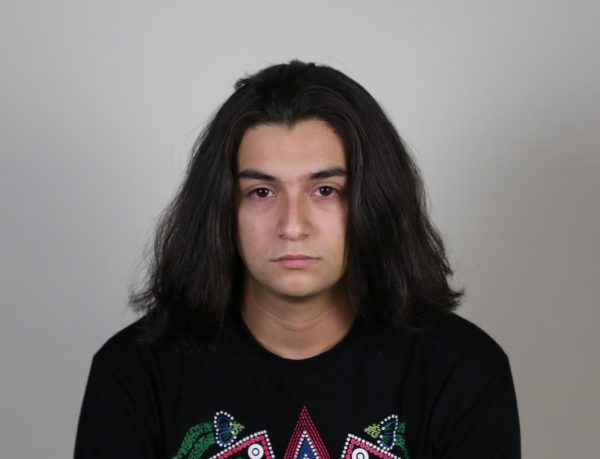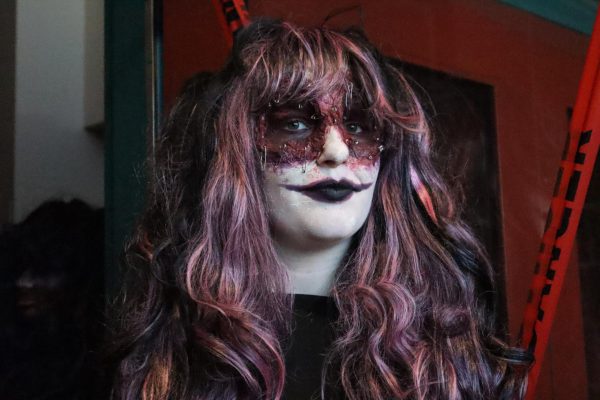Why AI art brings nothing to the canvas
How can artificial intelligence without human sensations, ideas, and experiences create art with heart & soul?
March 9, 2023
Whether it’s someone’s new stylized social media profile image, YouTube videos of SpongeBob characters reimagined as characters from an 80s dark fantasy movie, or scam posts with fake models with mangled-looking fingers, images created with artificial intelligence systems are popping up everywhere.
While artificial intelligence image generators like DALL-E-2, Stable Diffusion, and Midjourney have been released publicly for a few months, when the Lensa mobile app was released in December, it pushed the popularity of AI-generated art into the mainstream. Lensa users could spend a few dollars, upload a set of photos of themselves to the service, and it would generate a series of illustrated selfies in various styles of their choosing.
Lensa’s so-called “Magic Avatar” feature generated fantastic images that could make people look like superheroes and supermodels, generally making people look more attractive. When people started posting these images on their social media accounts, it drove other people to try out Lensa and thus continued the trend of normalizing and mainstreaming AI art in everyday life.
The emergence of these current image-creation tools has convinced people that the quality is sufficiently good to convince people of the value of artificial intelligence’s power. However, there are many people who feel that art created with artificial intelligence lacks the heart and soul that human artists put into their work.
But all this talk about A.I. and a lot of people don’t even know what it is entirely. Artificial intelligence is defined as “the theory and development of computer systems able to perform tasks that normally require human intelligence, such as visual perception, speech recognition, decision-making, and translation between languages,” according to the Oxford Dictionary.
Whether it be paintings, music, films, or poems, creating and consuming art is the most human thing we can ever do. It’s a highly complex expression of emotion, culture, and ideas that require an equally complex cognitive ability to process. The human brain is a highly complex organ. Everyone processes audio and visual signals differently, and neurological conditions can vary in how someone perceives the world around them.
Programs and machines only operate once they are given a command and they will execute only that command. Despite their massive processing power, they don’t have the cognitive ability humans have to feel and express emotions such as fear, empathy, or love. And without this emotional value, can we really call the images produced by Artificial Intelligence systems “art”?
Despite advances in computer technology, machines will never be able to truly replicate human consciousness and cognitive ability. So how can a program that completely lacks human emotions, ideas, and experiences create something of the same value as human art? How can a silly little robot make something as beautiful as the ceiling at the Sistine Chapel or even the Megamind movie?
The Edmond de Belamy is a self-portrait painting and the first piece of art created entirely by an artificial intelligence program by using an algorithm of over 1,000 self-portraits as reference. But is this even art? For something to be considered art, it has to be an expressive way of thinking, doing, and being.
But just think if artificial intelligence advances to a point where it can beautifully create works of art, songs, films, and poems without a human ever touching it, whether it’s just as good or even better than what humans are already making. If you were to watch a movie completely filmed and edited by an AI, I feel like watching it would feel wrong. With traditional movies, you can pause at any time and you know that it took an entire team of directors, actors, and editors to put that one scene together.
While we can argue about the value of AI-produced art in terms of the human perspective, there are also legal considerations that are at play, especially when it comes to who owns the copyright of the images produced by AI systems. And then also whether the owners of these AI systems committed copyright violations when they fed their systems trillions of images from the Internet to train them to produce what appear to be original images, but are really just derivatives of what some would say are stolen images.
There is currently a class action lawsuit that alleges this very issue and this case will no doubt have long-lasting implications on the future of art creation and on the ability of human artists to profit from their work going forward.
If the AI companies win it could hurt the human artists that actually create the works that we enjoy so much. Traditional artists would become uninterested in pursuing their art as generative AI becomes more available to the public. Users pay for the AI art instead of the human artists, so they stop making their expressive and unique art. Controlled and emotionless art is the mainstream.







